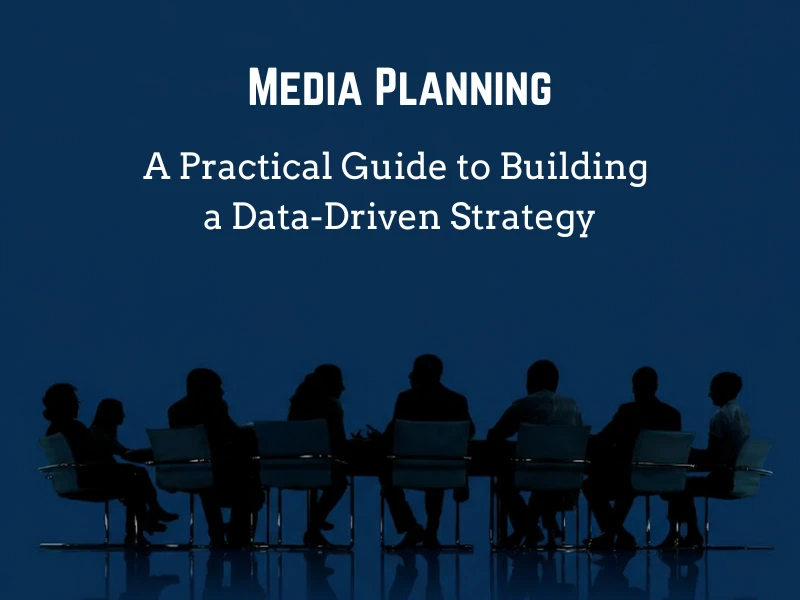Media Planning: A Practical Guide to Building a Data-Driven Strategy
Media planning has evolved from a simple scheduling exercise into a data-driven science that can make or break your marketing success. In today’s crowded digital landscape, every impression, click, and conversion must be backed by strategy and measurable results. Whether you’re managing a campaign for an e-commerce brand or a global enterprise, mastering media planning is no longer optional — it’s essential.
What Is Media Planning?
Media planning is the process of strategically selecting channels, timing, and budgets to reach your target audience with the right message at the right time. It’s the blueprint that determines how your marketing efforts translate into visibility, engagement, and ultimately, sales.
Media Planning vs. Media Buying
Although often confused, media planning and media buying are distinct functions. Media planning focuses on research, strategy, and data analysis — deciding where and how to advertise for maximum impact. Media buying, on the other hand, is the execution phase — negotiating prices, purchasing ad space, and managing placements. A great plan without precise buying is like a GPS with no driver.
Step 1: Define Clear Business and Marketing Objectives
Before you even choose a single ad channel, define what success looks like. Are you aiming to increase brand awareness by 30%? Generate 500 qualified leads? Boost sales of a specific product line by 20%? Each goal will dictate different platforms, creative approaches, and metrics.
Step 2: Deep Audience Research and Segmentation
Successful media planning begins with understanding who you’re talking to. For an e-commerce brand, this means segmenting customers by intent, behavior, and demographics. Use tools like Google Analytics, Facebook Audience Insights, or SEMrush One2Target to identify your ideal buyer persona. Analyze:
- Top-performing audience segments by ROI
- Preferred content formats (e.g., video, carousel, product demos)
- Conversion touchpoints — where do users drop off in your funnel?
Once your audience segments are defined, align your ad messaging and creatives with their specific motivations. A one-size-fits-all message is the fastest way to burn ad budget.
Step 3: Choose the Right Media Mix
Your media mix should balance paid, owned, and earned channels. For example, a data-driven e-commerce plan might combine:
- Paid Media: Meta Ads for remarketing, Google Shopping for bottom-funnel conversions, and TikTok for awareness.
- Owned Media: Email sequences, blog content, and SEO landing pages that nurture long-term trust.
- Earned Media: Reviews, influencer shoutouts, and UGC (user-generated content) that amplify credibility.
Use the 70/20/10 rule: dedicate 70% of your budget to proven channels, 20% to emerging ones, and 10% to experimentation.
Step 4: Build a Tactical Media Plan — Example for an E-commerce Brand
Let’s take a fictional online skincare store, Glowify, launching a new vitamin C serum. Here’s what a simplified media plan could look like:
| Objective | Channel | KPIs | Budget Allocation |
|---|---|---|---|
| Brand Awareness | Meta (Facebook & Instagram) Ads | Reach, Impressions, CTR | 40% |
| Traffic & Engagement | TikTok Ads + Influencer Reels | Views, Engagement Rate | 25% |
| Conversions | Google Search + Shopping Ads | ROAS, CPA | 30% |
| Retention | Email Marketing (Klaviyo) | Open Rate, Repeat Purchases | 5% |
Each phase should have its own testing loop: monitor, adjust, and optimize weekly. If TikTok drives strong engagement but poor conversions, shift that spend into retargeting via Meta or Search.
Step 5: Use Data to Continuously Optimize
Media planning isn’t a “set it and forget it” process. Leverage analytics tools to track real-time performance. Compare each channel’s Cost per Acquisition (CPA) and Return on Ad Spend (ROAS) across audiences and creatives. Double down on what drives the most efficient conversions.
Key data points to monitor:
- CTR (Click-Through Rate): Indicates creative and targeting quality
- Frequency: Avoid ad fatigue — cap impressions per user
- Attribution Models: Use data-driven models to understand which channels truly influence conversions
Common Mistakes in Media Planning (and How to Avoid Them)
- Neglecting First-Party Data: Relying solely on platform analytics limits insight. Collect and utilize CRM and website data to create richer segments.
- Overlapping Audiences: Running multiple campaigns targeting the same audience can cause auction competition and inflate costs.
- Ignoring the Creative-Data Feedback Loop: Performance data should guide creative decisions — test multiple angles and formats, not just budgets.
- Not Setting Frequency Caps: Oversaturating users leads to ad fatigue and wasted impressions.
Expert Tips for Advanced Media Planning
- Run Pre-Testing: Use A/B testing or predictive tools like Meta’s Split Testing before scaling.
- Integrate Offline and Online Data: If you have physical stores, sync POS data with online analytics to understand true omnichannel impact.
- Adopt Dynamic Budget Allocation: Reallocate budget dynamically based on real-time performance metrics — AI-based tools like Smartly.io can help automate this.
- Document Learnings: Keep a “media playbook” with lessons from each campaign — what worked, what didn’t, and why. This is gold for scaling efficiently.
Conclusion
Effective media planning combines analytical precision with creative storytelling. It’s about knowing your audience intimately, testing relentlessly, and optimizing with purpose. For e-commerce brands, the best media plans are not the biggest — they’re the most adaptive, data-driven, and insight-led. Build your plan like an evolving system, not a static report — and watch every campaign deliver compounding results.


